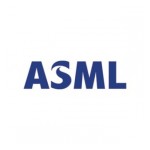ASML
Graduation assignment: investigate image feature extraction and classification via deep learning
Introduction
This is a graduation assignment for a master student with a background in Physics, Mathematics, Electrical Engineering or related with a focus on Image Processing, (Mathematical) Optimization and Machine Learning.
Job Mission
Within the Development & Engineering department at ASML, the group YieldStar Algorithms and Image Processing covers the development of physical, optical and mathematical models and methods. These are required to infer Overlay and Focus from scatterometry data. Relevant new metrics and algorithms, as well as new measurement functions, with optimum performance characteristics are identified, designed and implemented. The group is also responsible for contributing to the invention of new ASML products providing state-of-the-art expertise in Scatterometry, Machine Learning, Mathematical Optimization, Image and Signal Processing.
Job Description
Chips continue to get faster and smaller -- and more difficult to be manufactured. ASML's Holistic Lithography products help chipmakers to squeeze every bit of performance out of their lithography equipment. An important part of the Holistic Lithography package is YieldStar, a metrology tool that gathers data to maximize the performance of a lithography system -- which in turn allows manufacturers to produce more advanced chips. YieldStar works fast and with high accuracy because it uses an advanced technology called scatterometry.
The goal of this study is to build up a neural network to extract discriminative features from the acquired data. Instead of manually extracting data features, input data will be directly fed into a deep neural network that learns the features automatically. As part of the work, also the design of an image classifier that uses the extracted features and a training dataset of images will be carried out.
Education
You are a Master student in Applied Mathematics, Physics or Electrical Engineering with a focus on Image Processing, (Mathematical) Optimization and Machine Learning.
This is a graduation internship for 5 days a week with a minimum duration of 6 months. The start date is as soon as possible.
Please keep in mind that we can only consider students (who are enrolled at a school during the whole internship period) for our internships and graduation assignments.
Other information
What ASML offers
Your internship will be in one of the leading Dutch corporations, gaining valuable experience in a highly dynamic environment. You will receive a monthly internship allowance of 500 euro (maximum), plus a possible housing or travel allowance. In addition, you’ll get expert, practical guidance and the chance to work in and experience a dynamic, innovative team environment.
ASML: Be part of progress
We make machines that make chips – the hearts of the devices that keep us informed, entertained and safe; that improve our quality of life and help to tackle the world’s toughest problems.
We build some of the most amazing machines that you will ever see, and the software to run them. Never satisfied, we measure our performance in units that begin with pico or nano.
We believe we can always do better. We believe the winning idea can come from anyone. We love what we do – not because it’s easy, but because it’s hard.
Students: Getting ready for real-world R&D
Pushing technology further is teamwork, and our R&D team is more than 5,500 people strong, with major sites on three continents. Dozens of diverse, interdisciplinary teams work in parallel to meet a challenging development schedule.
In such an environment, your colleagues may be sitting next door, or they could be thousands of kilometers away in a different country, or even working for a different company.
An internship at ASML is your opportunity to get to know this world of industrial-strength R&D and get a feel for that excites you most. Will you design a part of the machine, or make sure it gets built to the tightest possible specifications? Will you write software that drives the system to its best performance, or work side-by-side with the engineers of our customers in a fab, optimizing a system to the requirements of the customer?

